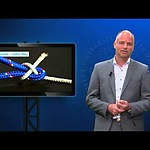The next web lecture by Roland Ortt is about management of innovation and entrepreneurship. In this lecture, he will particularly focus on product innovations. Notably, he distinguishes between two perspectives:
Innovation as a project
The innovation process is seen as a project - a new product development project - that starts when a new technology is available. To complete this process successfully, R&D management is required to develop the technology and R&D is further involved in the subsequent product development project.
Project management is required to manage the new product development project. Marketing management is required to prepare the market introduction plan, and to manage the subsequent diffusion process.
From the 1980s on, mainstream innovation management handbooks have presented innovation as a project.
Innovation as more than a project
In this perspective (and also the core of this web lecture) the innovation process is far more nuanced and complex:
Technology development and product development proceed in parallel. Usually the first products are unreliable, and the technology needs to be developed further to enable the development of reliable products. Jointly developing a product and the required technology is not just one project, but rather, resembles more a complex program of highly related and therefore iterative projects.
Many companies (or networks of companies) compete with each other by working in parallel on technology and product development. Sometimes findings are patented and then used by other consortia. In the era of open innovation, innovation is an interlinked process of many separate projects.
Sometimes, a new product cannot just be introduced. The market initially usually lacks all types of complementary products and services (say, infrastructure), or worse, production facilities are not yet availabl


